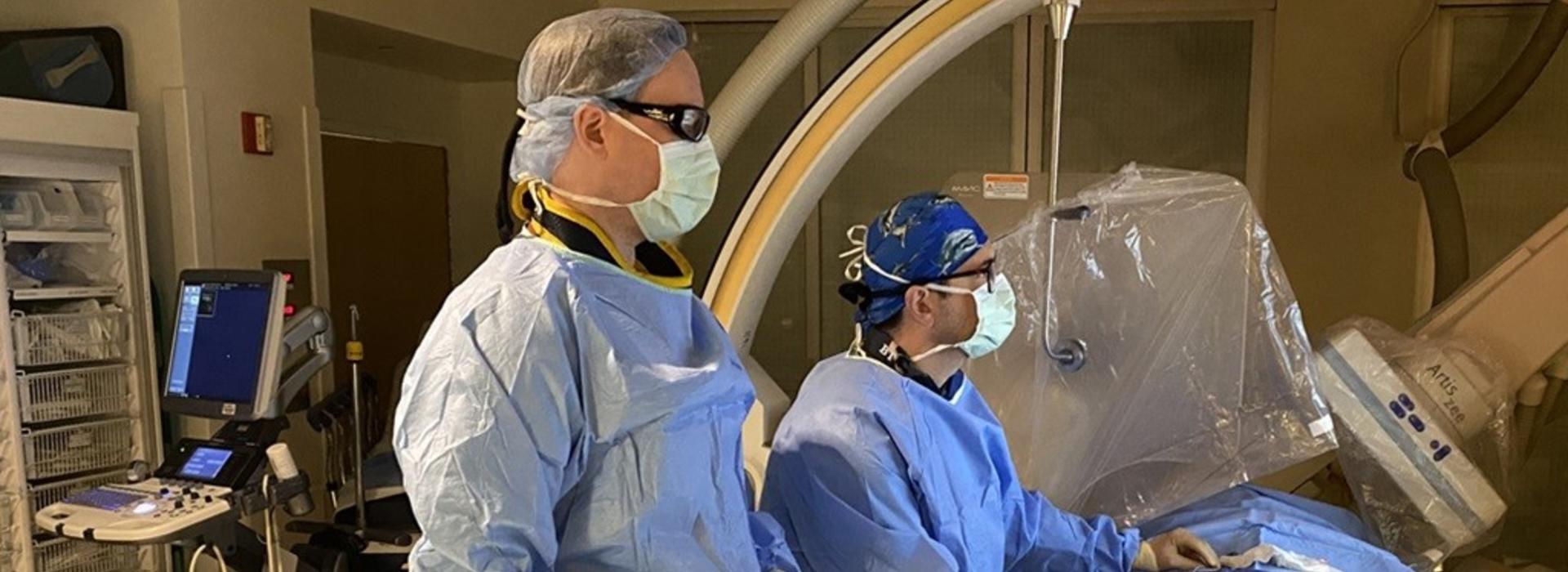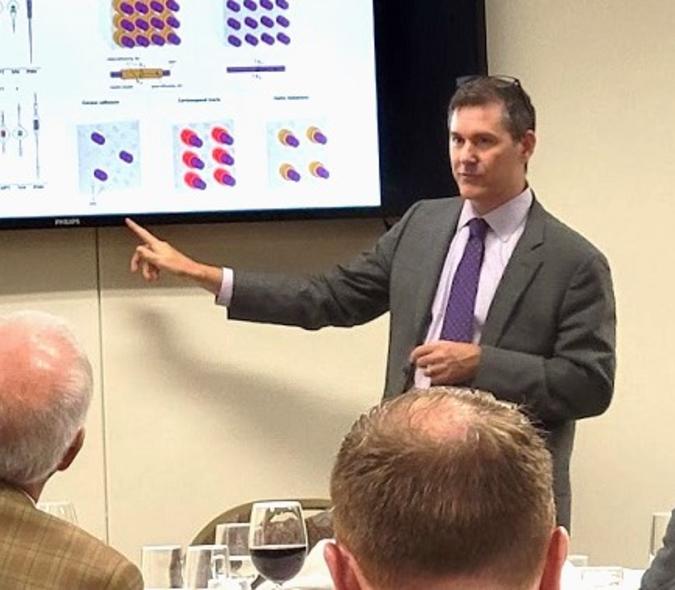
New robotic technology being tested can make neurosurgical procedures more efficient and effective – and more accessible
When Professor Ben Waldau, MD, MAS, FAANS, FACS, of the University of California Davis (UCDavis) Neurosurgery Department, recently spoke to the U’s Neurorobotics Consortium, he brought a message of optimism and challenge. As an open cerebrovascular and endovascular neurosurgeon, Waldau treats patients with aneurysms, arteriovenous malformations, cavernous malformations, Moyamoya disease, and acute large cerebral vessel occlusions.
During the Consortium’s meeting, which was hosted by U of M Neurosurgery Department faculty member Andrew Grande, MD, Waldau (pictured above in the UCDavis interventional radiology suite) outlined his department’s experience with bleeding-edge prototypes of a surgical robot designed to make certain procedures more efficient and effective. He was interested in seeing what the various iterations of the robot could do, both for his patients and the providers. (Note: at this point, the robot only has FDA approval for surgical procedures located in the neck.)
The robot’s first advantage is steady precision, according to Waldau. “I was skeptical that it can be better than a human hand but I changed my mind,” he said. “For example, with the stents that we use in our procedures, we need to use both hands —the left hand unsheathes the stent and the right hand puts some pressure on the wire to keep it in place. You are supposed to create a smooth motion but it can look a little bit jerky because you're constantly recalibrating what you're doing. If the robot does it, its grasp on the wire is steady and the process is very, very smooth. I think it will allow for even better deliveries of stents and flow diverters.”

Waldau (pictured here) envisions a future in which catheters have been developed that only the robot can steer. “The goal is to develop a catheter that has a flexible tip,” he said. “It would enable the robot to actually do much more than a human could do because you can't really use your hands in the neck when you're operating from the radial artery in the wrist or from the femoral artery in the leg.”
In addition to the surgical procedures for which the prototype robot is approved, Waldau’s team just published with the UCDavis Stroke Consortium on Robotics a paper titled, “Robotic Diagnostic Cerebral Angiography: A Multicenter Experience of 113 Patients,” which describes the robot’s use for cerebral angiography. “We’re already taking advantage of some of the robot’s benefits in this situation,” he said. “But there is a lot of room for improvement.”
The patient isn’t the only one to benefit from the use of this technology. The procedures performed by Waldau are often done using fluoroscopy. As a result, the neurosurgeon is exposed to radiation over time. And the very thing that protects them against the radiation – a heavy lead apron – may cause orthopedic injuries or exacerbate existing injuries. “Its weight can wear you down, especially if you have a very busy practice,” said Waldau. “The robots are designed to lessen radiation exposure, and no lead aprons need to be worn in the robotic cockpit.”
The message that Waldau wanted to impart to the U of M crowd is that their help is needed to keep moving the robot’s development along. “There's a tremendous opportunity for improving the technology,” he said. “It's an exciting field as there are so many things, such as flexible catheters, that can be developed.” There are also opportunities in software development. “You can create tools that enable catheters to be steered by themselves,” added Waldau. “I think from an engineering standpoint it would be much easier to develop self-driving catheters and wires because the situation is more controlled than navigating a self-driving car in inner city traffic.”
A tremendous advantage the robots have is in areas where large hospitals or academic centers are located far away from the patient who needs immediate stroke treatment, for example. “Personnel would be trained to set up the robot and get access to the patient’s wrist or groin for insertion of the wire,” said Waldau. “They would then work with a remote interventionalist who drives the robot and performs the mechanical thrombectomy [removing the clot from the brain].”
While Waldau reminded the U of M audience that the robot is just at the minimally viable product stage, it has a lot of promise – and our neurosurgeons and engineers have many opportunities to be part of that promise.



